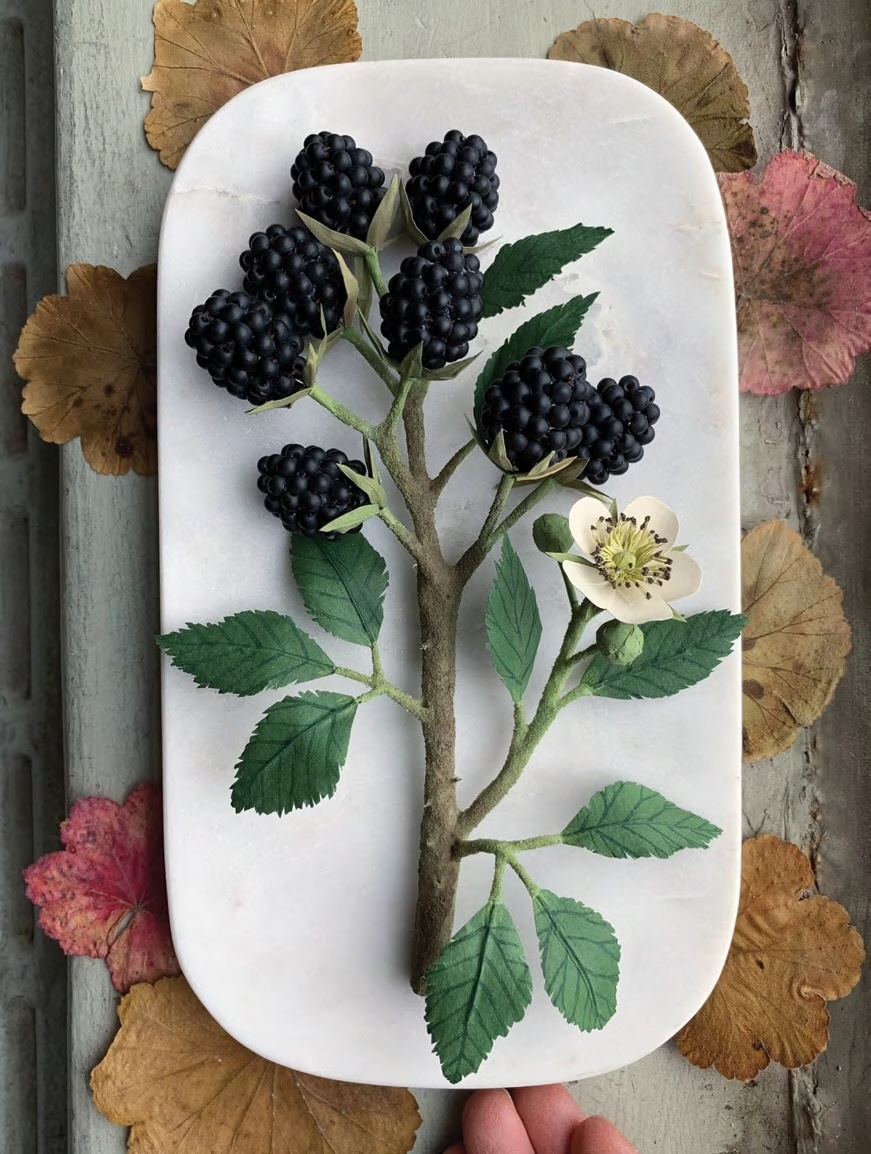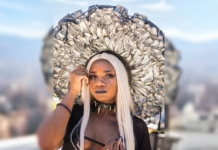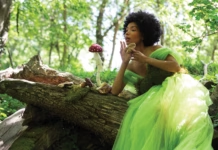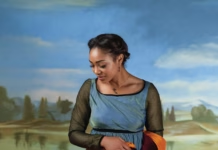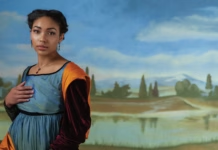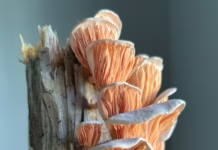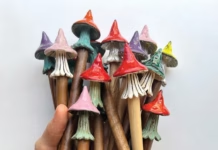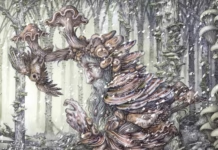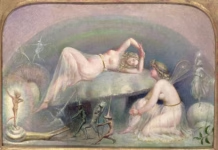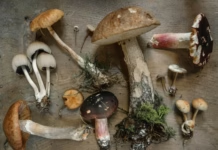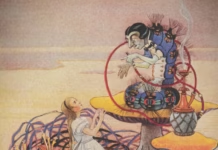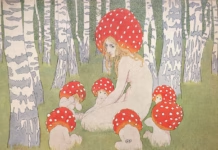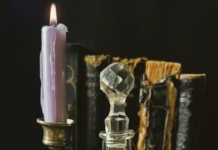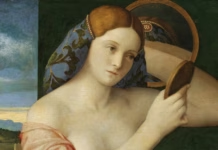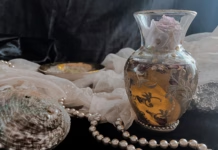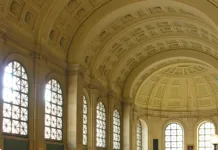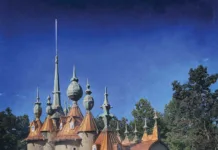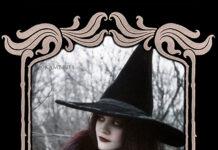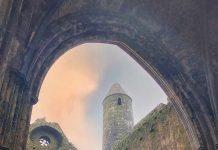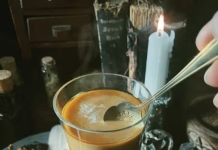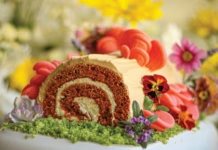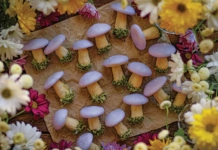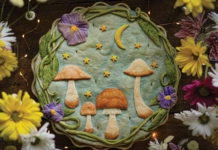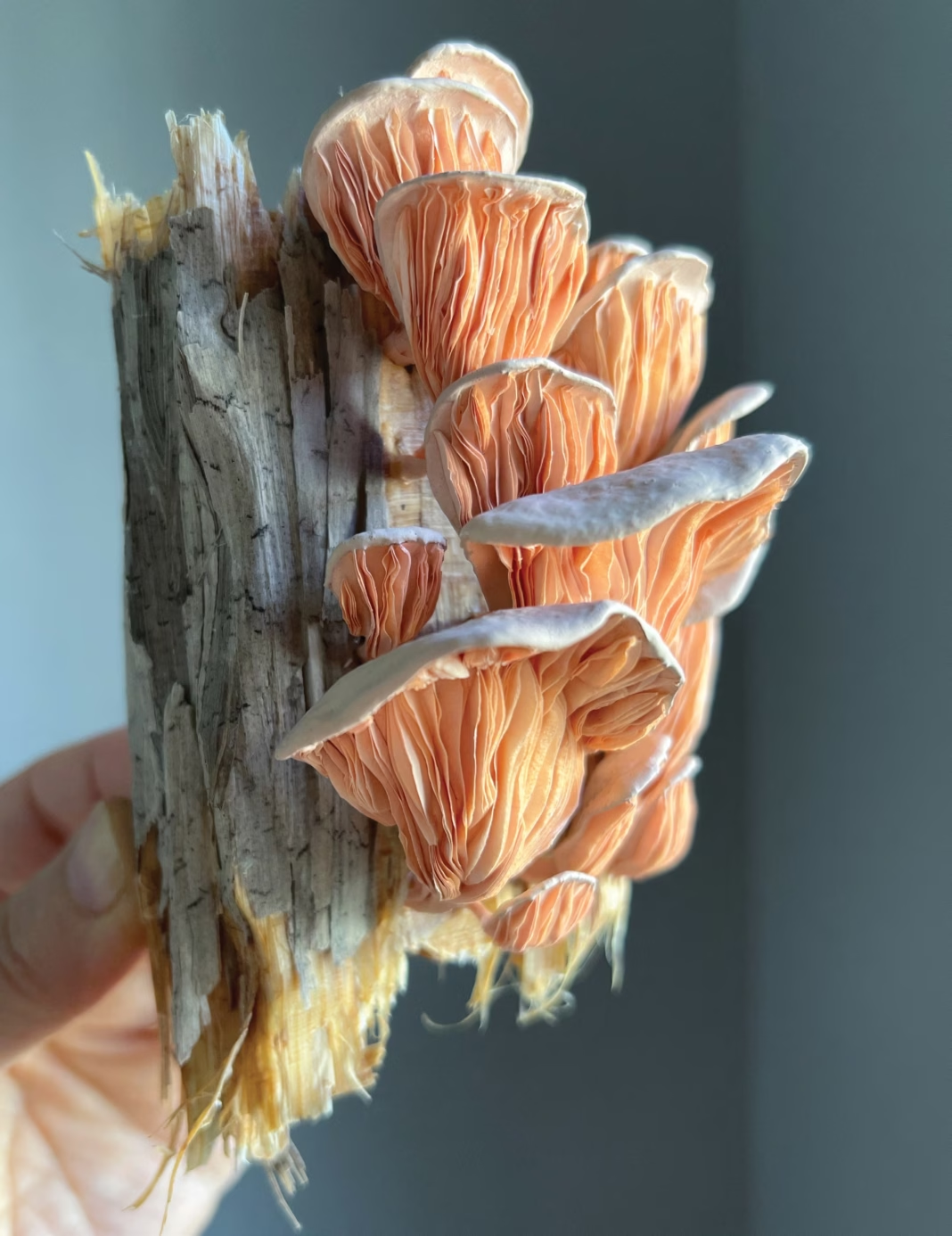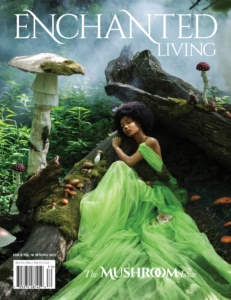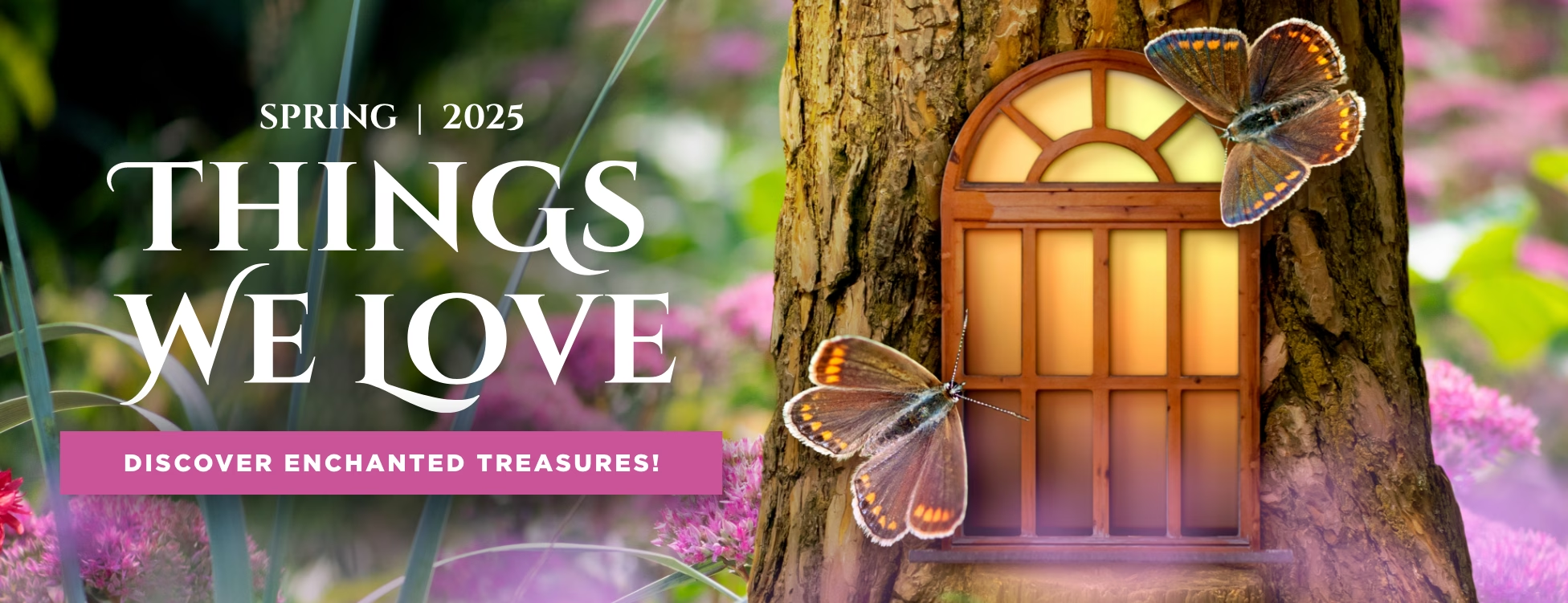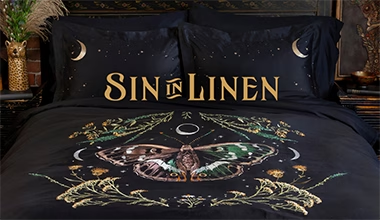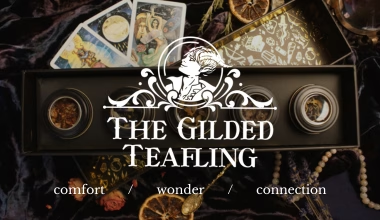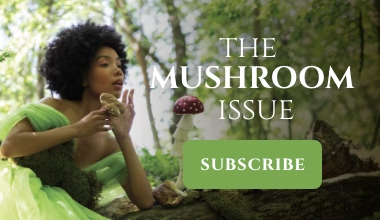In the last days of his life, Ann Wood’s father was thinking about plants. “He was looking at a sumac tree,” she says, “and he started describing how beautiful
it was. I just thought, Wow, he’s talking about plants. We could be discussing all kinds of things, but he’s talking about plants.” It struck her as both interesting and heartbreaking at the same time—and “like maybe there is a key to the universal here.”
She’d been working as a mixed-media artist for decades by then, after growing up on her parents’ Iowa farm and later graduating from the Minneapolis College of Art and Design. That was where she met her husband, and the two of them set up a fine craft business together while maintaining their own separate bodies of work. Suffering the loss of her father made her re-evaluate her direction. She wanted to make art that was personal to her—and through the personal, tap into the universal.
She’d also just joined Instagram, where she discovered artists working in paper to make botanical sculptures. They inspired her to go back to her roots, both literally and metaphorically. She wanted to make something primal, and she loved the idea of using paper, which can be manipulated to produce all sorts of amazing effects. She started by creating a simple feather, and ended up making a whole collection of feathers. And then came butterflies, and flowers, and paper food, and mushrooms, and birds.
There was an immediacy to this new medium that she liked. She was used to working on a piece for six months or longer; now she was creating quickly, putting her pieces on social media, and getting instant feedback. It was a new way of working in and within a community, reaching people anywhere in the world. It turned out to be just what she needed to progress as an artist and work through her grief.
When people look at her work, they’re astonished—first at the lush effect and minute details, then at what goes into it. People often marvel: “That’s paper? You can do that with paper?” That’s where she’s hoping to go, Wood says.
Her technique represents her subjects at the peak of their beauty. Flowers and mushrooms have their moment of voluptuousness and then decay, and for her, “it’s about capturing that moment … holding onto it and trying to understand it.”
Mushrooms are especially ephemeral, she says, because they appear so suddenly, then disappear just as fast. Within twenty- four hours they might reach their peak beauty and then melt away. To really capture a fungus, then, she has to study it in all its fleeting specificity. “I’ve made a lot of mushrooms that have gills on the underside,” she says. “That’s the part that most feels related to flowers in form, beauty, and delicacy.”
Each plant or fungus is shaped and marked by its own life story, an individuality she calls randomness. That’s one of the issues in making this art, she says: “That randomness is extremely hard to achieve. And most things are random. They’re not perfectly symmetrical. A young mushroom can be pristine white, or at a different stage, it might have some stain on it, or maybe something’s taken a bite out of it. To me, nature’s beauty is about that randomness.” The imperfections create personalities, and we get the sense that Wood knows each one of her subjects intimately: “Every single thing that grows in nature is unique. Every flower shape is unique. I would have never known that if I hadn’t studied plants and fungi so closely.”
Wood’s process is complex and painstaking. “The really fun part for me,” she says, “is coming up with the ways to create texture and color.” She estimates that she uses twenty to thirty different types of paper regularly—“some of it’s thick, some of it’s cardboard, some of it’s super-thin and transparent.” The paper itself might be ripped, cut, sliced, diced, or rolled up into a little ball; she could sand, press, or hammer it to get just the effect she needs.
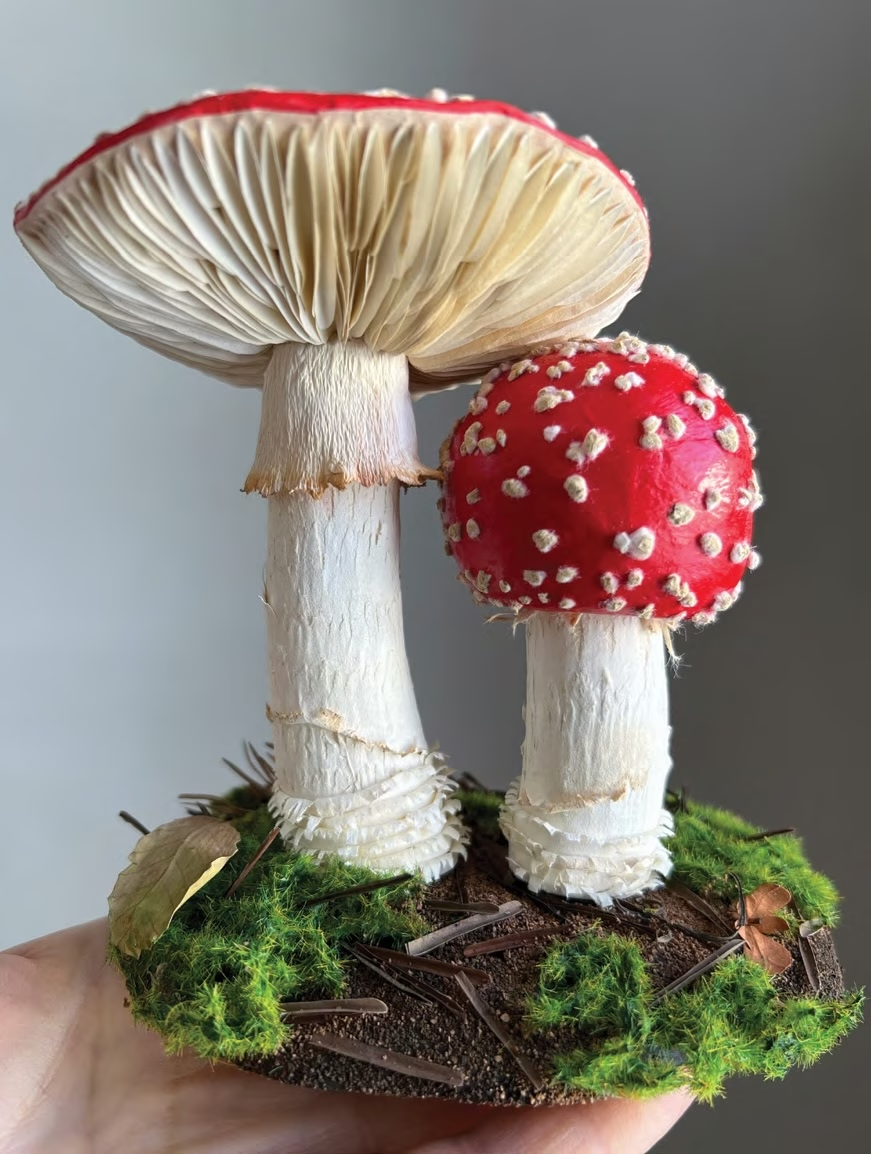
Color and luminosity are key concerns. White paper can look either heavy and solid or light and thin. For example, applying a coat of white glue makes her mushrooms translucent. She paints the paper to match the colors that the mushroom (or flower or any other subject) would be in real life. Thick paint and different finishes give more texture, making a piece glossy or shiny. She also uses colored pencils, gouache, and acrylic. One mushroom, for example, might require twenty different colors, twenty different tones, with maybe five variations of red in it.
While paper might be the beginning medium, Wood stays true to her roots as a mixed-media artist, which means she might (for example) throw dust on wet paint to create an effect. “My whole thing really is about exploring different techniques that I invent along the way to have paper translate into the real thing,” she says. She’ll incorporate whatever it takes to create the right texture—even some rather bizarre materials. “I was pulling lint out of the dryer one day,” she says, “and I realized that it looked like the top of one of the mushrooms I was working on. I thought, What if it was rolled into little balls? I’ve used spices for the pollen on flowers, like paprika—it works for pollen on a lily. The whole world becomes a source of materials.”
Wood now has a steady stream of inspiration—and challenges.
She follows several mushroom foragers’ accounts, has a library of field guides and art books, and is always astonished at discovering new varieties she’s never seen before. Right now, she says, she’s working on some tiny mushrooms with caps the sizes of stud nails, which will cover a three-inch piece of bark covered in moss. She’s figuring out how to get up inside to make the gills.
That kind of challenge keeps her work constantly expanding. How will she make the moss? How will she get it to look just the right amount of random? How can she convey a mushroom’s personality, so that when someone looks at a piece, they stop and say, “Wow, that’s really cool”?
She might not have all the answers right away, but we can give her one right now: She will do it all with the ingenuity, grace, and sheer amazing creativity that keep us marveling at both the natural world and the power of art.
See more of Ann Wood’s work at woodlucker.com and follow her on Instagram at @woodlucker.
